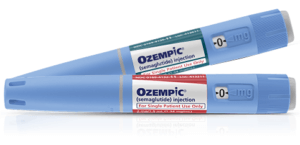 Many people have heard of dopamine agonist medications, but aren’t quite sure what they actually do. In simple terms, these drugs act on the brain’s dopamine receptors, the same places that the natural neurotransmitter dopamine would normally attach. When dopamine levels drop too low, as happens in conditions like treating Parkinson’s disease (PD) or restless legs syndrome (RLS), movement, mood, and motivation can all be affected.
Many people have heard of dopamine agonist medications, but aren’t quite sure what they actually do. In simple terms, these drugs act on the brain’s dopamine receptors, the same places that the natural neurotransmitter dopamine would normally attach. When dopamine levels drop too low, as happens in conditions like treating Parkinson’s disease (PD) or restless legs syndrome (RLS), movement, mood, and motivation can all be affected.
A dopamine agonist steps in and helps by:
- Binding and triggering these receptors to act as if dopamine is present
- Supporting the treatment of PD symptoms like tremors and stiffness
- Calming sensations in the legs for those with restless legs syndrome.
For many people, these medicines are an important tool for managing brain conditions linked to low levels of dopamine.
How dopamine agonists work
Connecting with dopamine receptors
Dopamine agonist medications are designed to copy the actions of dopamine, an important neurotransmitter in the brain that affects movement, motivation, and mood. In conditions like treating Parkinson’s disease or RLS, dopamine levels drop, leading to problems like tremors, stiffness, or an overwhelming urge to move the legs. Dopamine agonists connect to specific dopamine receptors, including d1 and d5 as well as d2, and bind and trigger them in the same way dopamine normally would. This signal “tricks” the brain into thinking there’s enough dopamine available, restoring smoother movement and easing symptoms.
Why dopamine agonist medications are used in Parkinson’s disease
Doctors often prescribe dopamine agonists for the treatment of Parkinson’s in the early stages, and they may keep using them later alongside levodopa. They help by:
- Improving tremor, muscle stiffness, and slowness
- Allowing patients to delay starting to take levodopa, which can mean fewer long-term movement complications
- Providing steady symptom control, especially with newer forms like patches.
Although dopamine agonists don’t stop Parkinson’s from progressing, they help manage symptoms so that daily life is easier.
The role of dopamine agonist medications in restless legs syndrome
For RLS, dopamine agonists calm the uncomfortable leg sensations that flare up at night. They’re often given at very low doses—much lower than for Parkinson’s. When taken in the evening, these drugs reduce the urge to move, helping people sleep better and feel less exhausted during the day.
Side effects and considerations
Dopamine agonists can also bring challenges. Some people experience orthostatic hypotension, a sudden drop in blood pressure when standing. Others notice changes in behavior called impulse control problems—sudden urges to gamble, shop, or overeat. Stopping these drugs too quickly can lead to withdrawal syndrome with withdrawal symptoms like anxiety, depression, or irritability. Careful medical guidance is important when adjusting doses.
Below is a combined comparison table showing the most commonly prescribed dopamine agonists used for either Parkinson’s disease (PD) and Restless Legs Syndrome (RLS), side by side, with notes on their roles, pros, and cons for each condition.
Dopamine agonist medications for Parkinson’s Disease & Restless Legs Syndrome
| Brand
name |
Parkinson’s role | RLS role | Pros/Cons |
| Mirapex
(pramipexole) Released 1997 |
Core therapy in early Parkinson’s Often combined with levodopa later | FDA‑approved for RLS (2006) at much lower doses | Pros
Strong evidence for both PD & RLS Delays levodopa start in PD Often effective quickly for RLS Cons Impulse control issues (gambling, shopping) Sleep attacks Risk of augmentation in RLS (symptoms worsen over time) |
| Requip
(ropinirole) Released 1997 |
Used in early PD and alongside levodopa | First dopamine agonist FDA‑approved for RLS (2005) | Pros
Oral dosing (immediate & extended release) Works for both PD & RLS Cons Impulse control & orthostatic hypotension Nausea, dizziness Augmentation risk in RLS |
| Neupro
(rotigotine patch) Released 2007 |
Patch provides steady PD symptom control | FDA‑approved for RLS (2012) | Pros
Only transdermal patch option Good for people with swallowing issues or pill fatigue Cons Skin irritation from patch Costly Similar impulse control side effects as oral drugs |
| Parlodel
(bromocriptine) Released 1978 |
First dopamine agonist used for PD Now less common due to side effects | Not FDA‑approved for RLS but occasionally used off‑label | Pros
Decades of clinical experience Can treat hormonal issues (high prolactin) as well Cons Older drug: more nausea or dizziness Rare heart valve problems with long-term use Limited benefit for RLS |
Summary of dopamine agonists
Dopamine agonist medications fill in for the brain’s missing dopamine by binding and triggering the same receptors dopamine would normally connect to. It’s most often used in treating Parkinson’s disease and restless legs syndrome, helping with movement, stiffness, and even calming restless sensations. While it’s not without challenges, like the possibility of orthostatic hypotension, impulse control issues, or withdrawal symptoms, for many people it’s an essential part of keeping life on track when dopamine levels fall short.
Frequently asked questions about dopamine agonists
What are examples of dopamine agonists?
Common dopamine agonist medications include Mirapex, Requip, Parlodel, which are all tablets, and Neupro patches. Doctors often use these for treating Parkinson’s disease or restless legs syndrome because they act like dopamine and help with symptoms such as tremors, stiffness, or leg discomfort.
Is there a pill to increase dopamine?
There isn’t a pill that simply “raises dopamine” directly. Instead, medicines like dopamine agonists work by binding and triggering dopamine receptors, creating the effect of dopamine being present. Other treatments may help the brain keep more dopamine, but they don’t just pour extra dopamine in.
Do dopamine agonists make you happy?
Some people feel a mood lift when taking these medicines because they stimulate dopamine’s “reward” pathways. But they aren’t designed to make someone “happy.” In fact, overstimulation can sometimes lead to impulse control issues like gambling or overspending.
What is a natural dopamine agonist?
Exercise, music, sunlight, and even meditation can all boost dopamine activity naturally. These aren’t as strong as dopamine agonist medication, but they gently encourage the brain’s dopamine system and can support well-being.
What happens if you block dopamine receptors?
Blocking dopamine receptors has the opposite effect of an agonist. It reduces dopamine’s action, which can calm overactive brain activity (useful for some psychiatric conditions) but may also cause stiffness, slowed movement, or other Parkinson-like effects.
What is a dopamine agonist, and how does it work?
Dopamine agonists are medicines that act like a natural brain chemical called dopamine. They connect (“agonize”) to dopamine receptors in the brain, just like real dopamine would, and make nerve cells respond as if dopamine is present. This helps with things like movement and motivation when the brain isn’t making enough dopamine.
Why are dopamine agonists used for Parkinson’s disease or restless legs syndrome?
These medications are especially helpful in conditions linked to low dopamine:
- In Parkinson’s disease, dopamine-making brain cells slowly die off. Dopamine agonists help reduce symptoms such as tremors, stiffness, and slow movement.
- In restless legs syndrome (RLS), people feel an uncomfortable urge to move their legs, especially at night. Dopamine agonists ease these sensations, helping people sleep more comfortably.
How soon can someone expect to feel better after starting a dopamine agonist?
Improvement usually happens gradually. When someone begins treatment, for example with ropinirole or pramipexole, the doctor starts with a low dose and slowly increases it. It often takes several weeks before the full effect is felt.
What are the most common side effects of dopamine agonists?
Like all medications, dopamine agonists can cause side effects. Some of the most common include:
- Nausea, dizziness or low blood pressure when standing (“postural hypotension”)
- Sleepiness or suddenly falling asleep during normal activities (“sleep attacks”)
- Impulse control problems, such as gambling, shopping sprees, or sexual urges. These happen because dopamine affects the brain’s reward system.
Can dopamine agonists cause long-term issues or risks?
Yes. Over longer periods, some people may develop:
- Irregular or jerky movements (dyskinesias)
- Hallucinations or confusion, especially in older adults
- Heart valve problems or tissue thickening (with certain older dopamine agonists). As well, if someone stops these medications too quickly, they may experience a withdrawal syndrome with irritability, depression, or anxious feelings. That’s why any changes should be made under medical supervision.














